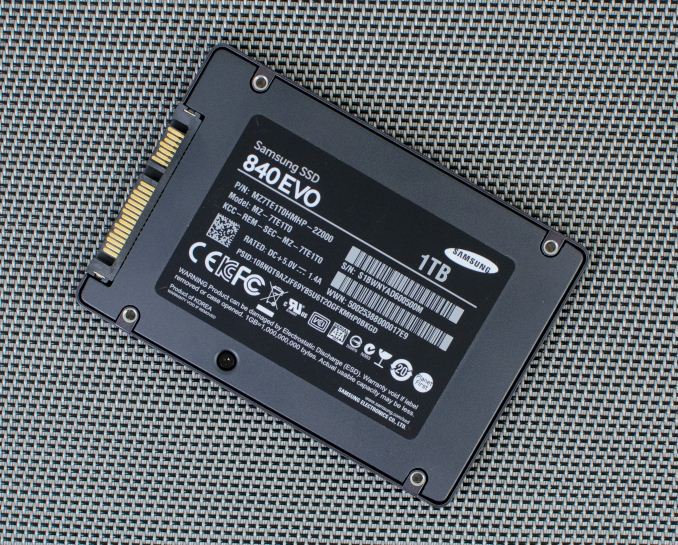Serious problems with reading Samsung 840 Evo data and how to fix it

At various IT resources, owners of Samsung 840 Evo family of solid-state drives began to say that reading speed of some data leaves much to be desired. At the end of September of this year, this became obvious to the news sites. Perhaps the longest is the 132-page discussion thread on the forum overclock.net , which clearly demonstrates the mass character of the problem.
The Samsung 840 Evo is drives from 120 gigabytes to 1 "fair" terabyte, available in form factors for SATA and mSATA connectivity. Immediately after the appearance, they were one of the best solid-state solids for home use, their price and characteristics remain very attractive a year after the model was released.
The problem manifests itself with old data recorded over 30 days ago. This also explains why it was not found in synthetic tests and disk reviews performed by various online and offline technology publications — no one deliberately recorded data or waited a month to re-read the test and compare the results.
')
A trick was played by TLC NAND-memory, which stores 3 bits in a cell, which requires correct calibration of eight voltage levels at once, as shown in the illustration below. It is possible that this calibration for aging records was performed incorrectly. Fortunately, the problem is completely solved by updating the firmware using a special utility from the official Samsung website.

Unable to read the information, the disk performs many repeated read operations. A good coincidence is also the fact that the wear of solid-state drives is not due to reading, but due to data erasure, so the disks are not badly affected by this bug in the firmware.
For comparison: this is a graph of the speed of reading the disk Samsung 840 Pro user gino074. There are no similar problems with this model range.

And this is a graph of the speed of reading his Samsung 840 Evo 500-gigabyte disk, connected to the same motherboard, he only worked for some time, and data was recorded on it. According to users, the reading speed of some dropped to 20 megabytes per second or even lower.

After a huge number of complaints about the performance of the sky, Samsung engineers did the sheepskin, and experts promptly promised to release a utility to fix this problem in the middle and end of October. At first, only utility version 1.0 for Windows was available, but since the appearance of the first solution, the slightly improved version 1.1 and the first DOS version for Linux and Mac OS have already been released.
This is not some kind of “crutch”: the presented utility updates the firmware and completely overwrites the data on the disk, therefore, by the way, its speed depends on the size of the hard drive. Unlike some drive management programs, which, as reported by users, gave a temporary effect (and it is worth remembering that occasional erasing and rewriting of data will wear out a solid-state drive), the Samsung utility solves the problem completely and finally.
The Samsung SSD 840 EVO Performance Restoration program has a number of limitations (the guide lists 17 major and several other parts of the document), here are the most important ones:
- The utility is written only for Samsung 840 Evo 2.5 "and its mSATA version.
- Of course, Samsung does not guarantee the safety of data both in principle (the user acts at his own risk), and when a disk is suddenly disconnected and the recovery utility completes. Also, in case of sudden disconnections, the firmware of the device may be damaged, which will turn the drive into a useless metal bar. The manufacturer recommends making a backup of the data on the recoverable solid-state device. (Personally, my recovery using the Windows utility has passed without any incidents.)
- If the disk has already been restored by the utility of version 1.0 for Windows, then it is not necessary to repeat the recovery by the Windows-utility 1.1
- The utility requires at least 10% free disk space.
- The utility does not work for disks connected via a SCSI controller and USB-to-SATA interface.
- There may be malfunctions when restoring a disk with an AMD controller driver. The documentation states that the latest AMD drivers can solve this problem, but there is no information on which version should fit. Users are encouraged to roll back to Microsoft's AHCI drivers. In general, Samsung indicates that only chipsets from Intel and AMD are supported; when trying to restore with problem controllers, the utility will issue a warning.
- The Samsung 840 Evo supports 256-bit password AES data encryption with support for the Trusted Computing Group Opal and Microsoft eDrive standards. The recovery utility cannot work with encrypted disks.
- The Windows utility works only with the NTFS file system, only MBR and GPT volumes are supported.
- RAID arrays are not supported.
- Dynamic disks are not supported.
- If the recovered disk has the second operating system of the Windows family installed, then the recovery utility must be run from under it. This restriction is due to Windows policies.
- DOS-version must be pre-recorded on an optical disc or flash drive.
It is highly recommended that you read the full version of the relevant section of the manual.
The Windows utility, its DOS version and manuals for their use are available for download from the Samsung website (the webpage should be run through the Samsung SSD 840 EVO Performance Restoration Software section).
Source: https://habr.com/ru/post/362647/
All Articles